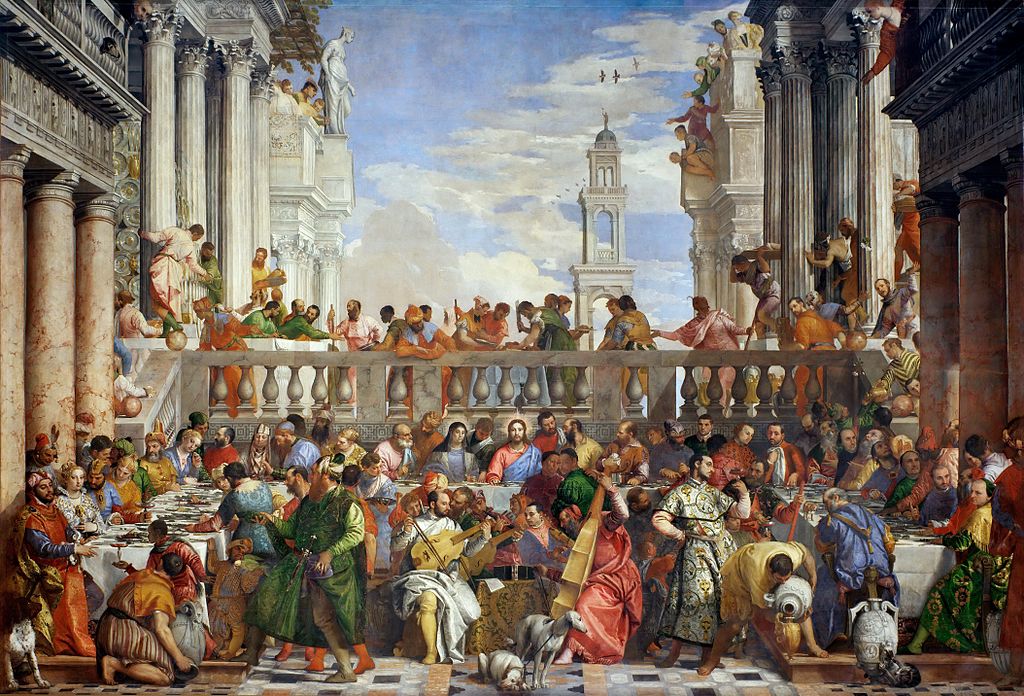Paolo Veronese, The Wedding Feast at Cana

Venice, 1563
Oil on canvas, 259.8 × 389.8 in. (660 × 990 cm.)
The Louvre
In the lower right the servants are pouring from one of the jugs into a pitcher. Left of them the chief steward examines a cup of the water-become-wine, another cup of which an African servant carries to the man seated on the far left. On that man's left, in a white dress more elaborate than those of the other women, is what I take to be the bride. The young man whispering in her left ear is presumably the groom.
Surprisingly detached from all this action, Jesus sits in the center of the table and returns the gaze of the viewer. Directly above his head a butcher prepares a cut of meat, perhaps suggesting the sacrifice of the "Lamb of God" seated below. This would associate the celebration in the painting with both the Crucifixion and the "Wedding Feast of the Lamb" in Revelation 19:7. It also makes a comment on the space for which the canvas was painted: the refectory of the monastery of San Giorgio Maggiore.
Despite the bridge and the un-Venetian neoclassicism of the buildings, the space represented in the painting is somewhat like what one sees if one stands in front of St. Marks and looks south past the St. Theodore pillar to the blue sky above the lagoon. On the other side of that lagoon is the actual monastery of San Giorgio Maggiore.
Read more about images of the Miracle at Cana.
Source: this page at Wikimedia Commons.